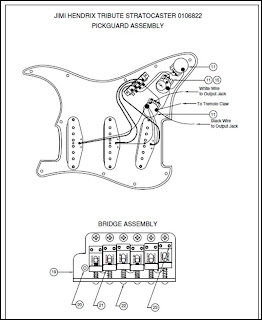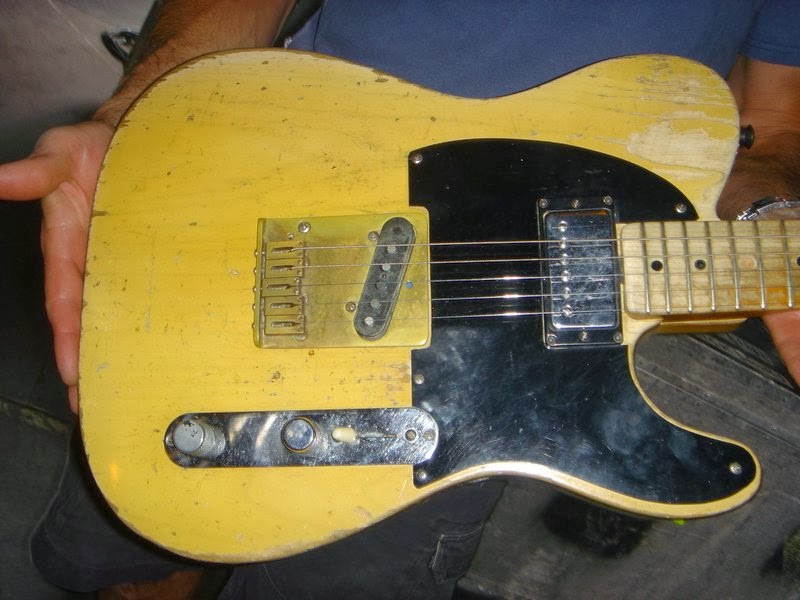Circuits- Grouped by guitar scale length
Short scale- less than 24.75" Gibson
Dave Navarro
Santana
Brian May
Scale length- 24.75" Gibson and others
Jimmy Page
Garcia- Tiger, Wolf and Travis Bean
Townsend
Zakk Wylde
Joe Perry
BB King
Mark Knopfler
Long scale- more than 24.75" Gibson includes Fenders at 25.5"
Billy Corgan
Bo Diddley
Clapton
Eddie Van Halen
Richie Sambora
Stevie Ray Vaughn
Trey Anastasio
David Gilmore and the SSL pickup
Jimmie Hendrix
Buddy Guy
Muddy Waters
John Mayer
Thurston Moore
Jeff Beck
Curt Cobain
Dick Dale (classic surf strat)
George Lynch
Buckethead
Rigs and effects
Kieth Richards
Johnny Ramone
Stephen Stills
Mike McCready Pearl Jam
The Edge
Slash
Warren Haynes- varies with bands- Goverment Mule, Allmans, Dead, Other
(Hendrix should also probably be here)
Guitar scale length effects tone and comparison is toward the bottom of the post. Shorter scale lengths have softer/looser strings and easier bends.
Scale Lengths
In addition to table below:
- PRS =25"
- Schecter= 24.75" and Travis Bean TB 500 = 24.75
- Jerry Garcia's Tiger by Doug Irwin= 24.75 and a hefty 14 pounds compared to Les Pauls weigh 9 lbs now but were 12 lbs in the 50s and 60s
- Eddie Van Halen Frankenstein Guitar and Treys 25.5" same as Strat
- Buckethead 27" scale length

Links are on most images.
Short scale length guitars (shorter than Gibson)
Dave Navarro 25" Scale length PRS
 |
| Dave Navarro PRS |
 |
| Santana- 25" scale length for PRS Guitars |
 |
| Brian Mays guitar was a 24" scale length custom built by Ed Roman. Romans other guitars are 25". |
24.75" Scale length- Gibson and others
 |
| Sold to Jerry Isray Indy Colts owner 2002 for $950,000. Guess it helped win the 2006 Superbowl. |
 |
| Built by Doug Irwin and delivered 1973 with 2 versions to follow through 1993 when Tiger by Cripes arrived. The Travis Bean was played early 80s and traded off with Wolf |
 |
| Garcia Inspired |

Townsend - Les Paul

 |
| Joe Perry Gibson |

Zakk Wylde Les Paul

BB King Varitone



Mark Knofler Wiring

Mark Knofler Wiring
25.5" Scale length - Strat and others
Bo Diddley 25.5" scale with 2 hum bucks and 4 knob setup- neck vol, bridge vol, master vol and master tone. 3 position switch neck, bridge and both. |
| Billy Corgan Bo Diddley |
 |
| Eric Clapton Strat with Board to Boost Midrange |

Eddie Van Halen Frankenstein

 |
| Richie Sambora Strat |
 |
| Stevie Ray |
 |
| Stevie Ray switch info |
 |
| Buddy Guy Polka Dot Strat |
 |
| Muddy Waters Tele |
 |
| John Mayer Strat |

Treys Wiring

David Gilmore
| SSL-5 high output pickup |
David Gilmour approached Seymour Duncan in the the late 1980s to enquire about getting a single coil with hotter output than standard Fender Stratocaster pickups.Gilmour's tone was so delicate that he wasn't willing to switch a single coil out of the Strat for a humbucker, and thus the Seymour Duncan SSL-5 single coil was born. It featured stronger magnets and was more aggressive than a standard single coil pickup, but cleaned up nicely and produced a mellow sound with the volume pot rolled off slightly on a Stratocaster..
In a blog on the Seymour Duncan website, Evan Skopp said:
"When the so-called SSL-1C, which was a one-off designed for Mr. Gilmour, eventually went into production, it became the SSL-5 Custom. The SSL-5 you buy today is essentially the same pickup as the SSL-1C that Phil Taylor [guitar tech for Gilmour] ordered from Seymour and which went into the Black Strat. "For Fender’s DG Black Strat reissue and as a tribute to this bit of guitar history, we stamp “SSL-1C” into the bottom flatwork of the SSL-5s that are installed in the bridge position of that guitar." David Gilmour spent years of his life trying to perfect the setup of his famed 'Black Strat', and he eventually stuck with the SSL-1C. He had previously tried PAF humbuckers, and a number of alternative single coils. It is now a guitar with one of the most recognisable tones in the industry.
Link to build of the Gilmore Strat:
http://www.seymourduncan.com/forum/showthread.php?191286-A-4000-David-Gilmour-Guitar-for-less-than-750%85
There is a lot on the web on Gilmores black strat. You can build a good mod or pay the $4000 from Fender Custom Shop
Here is one version of the circuit:
 |
| Hendrix Wiring |
 |
| Thurston Moore Sonic Youth |

Jimi Hendrix Effect


Kurt Cobain Wiring


Dick Dale Surf Strat


George Lynch Single Vol knob guitar- strat

Guitars longer than 25.5 scale length
 |
| Buckethead Wiring Kill Switch- scale length 27" monster |
 |
Rigs and Equipment
Kieth Richards
See link for guitars and info - amazing the stones had 65 stage ready guitars at every show
Richards trademark is Macawber (Dickens character) a 53 Telecaster that has been reworked with a top loading bridge and a Gibson PAF in the neck position. Tuned to open G with no low E string so only 5 strings and the same for his sunburst telecaster 'Sonny' 5 screw pickguard with a broken point between the neck and pickup. Bridge is brass with chrome striped. Flat top knobs with a strat switch knob.
 |
| Stephen Stills- Just a Gretch White Victory |
 |
| Pearl Jam Mike McCready Rig 1997 |

U2 The Edge Rig


Slash Rig

Warren Haynes
What he plays depends on the band and more details than can be listed here. Links have the info and the second link is about the Garcia symphony tributes 2013 where he plays Jerrys 'Wolf ' guitar. Sold for $780,000 in 2002 so probaly most expensive instrument Warren has played. Original provided in 73 for $1500.
http://www.uberproaudio.com/who-plays-what/421-warren-haynes-guitar-gear-rig-and-equipment
http://www.gratefulweb.com/articles/warren-haynes-north-carolina-symphony-tribute-jerry-garcia


















.JPG)
.JPG)
.JPG)

.JPG)
.JPG)
.JPG)
.JPG)
!rLrBSTiH+()9w~~60_12.JPG)
!MIUWBSTiH4p!M!~~60_12.JPG)



